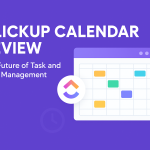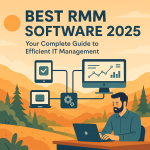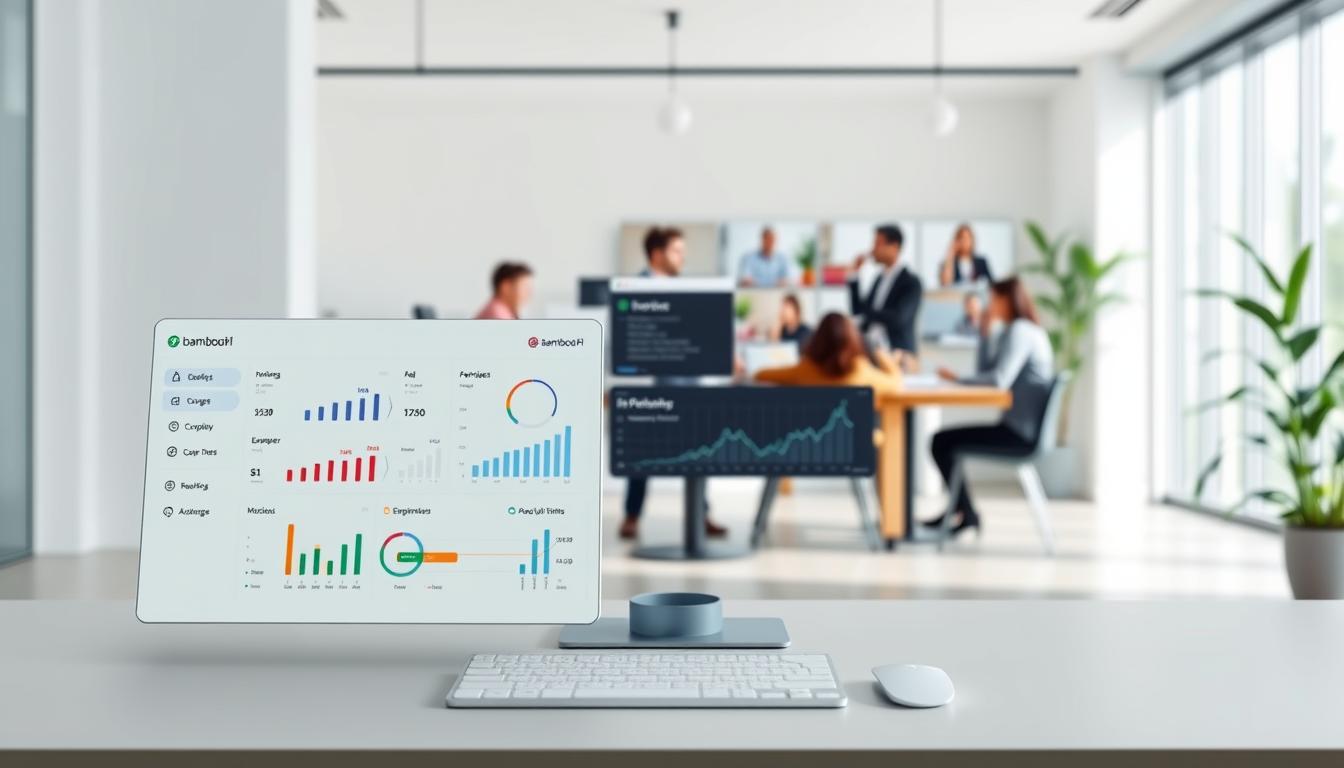For small companies, managing finances effectively is crucial. A well-planned project budget acts as the backbone of any initiative, ensuring resources are allocated wisely. It helps track expenses, timelines, and overall progress, making it easier to stay on track1.
Using the right tools can simplify this process. Project management software offers features like expense tracking, resource allocation, and real-time updates. These tools help small businesses maintain control over their finances while focusing on growth2.
Creating a detailed project budget ensures transparency and accountability. It allows teams to compare planned vs. actual expenses, identify discrepancies, and make informed decisions. This approach not only saves money but also builds trust with stakeholders3.
Key Takeaways
- A clear project budget is essential for tracking expenses and resources.
- Project management software simplifies budgeting and resource allocation.
- Detailed budgets help identify discrepancies and improve decision-making.
- Tracking planned vs. actual expenses ensures financial transparency.
- Effective budgeting builds trust with stakeholders and supports growth.
Understanding Project Management on a Budget
Effective financial planning is vital for small businesses to thrive. A limited budget doesn’t mean compromising quality. Instead, it requires strategic allocation of resources to ensure every dollar counts4.
Budgeting plays a crucial role in controlling costs and guiding decisions. By tracking expenses and comparing planned vs. actual spending, teams can identify discrepancies early and adjust accordingly5.
Financial planning ensures that resources are maximized. For example, setting aside a contingency fund helps handle unexpected expenses without derailing the entire plan6.
Here are some practical methods for tracking costs:
- Planned vs. actual comparisons to monitor spending.
- Regular budget reviews to stay on track.
- Using technology for real-time expense tracking.
Small businesses benefit greatly from efficient financial management. It not only reduces costs but also builds trust with stakeholders and improves planning for future initiatives4.
Real-life examples show how effective budgeting keeps projects on track. For instance, companies that align their budgets with business strategies are 45% more likely to stay within financial limits5.
Leveraging technology can enhance cost oversight. Integrated platforms provide real-time data, making it easier for teams to collaborate and make informed decisions6.
| Method | Benefit |
|---|---|
| Planned vs. Actual | Identifies discrepancies early |
| Contingency Funds | Handles unexpected expenses |
| Technology Tools | Improves real-time tracking |
Defining Your Project Budget and Objectives
Crafting a clear financial plan is the first step toward achieving business goals. A project budget outlines all expected costs, including labor, materials, and operating expenses. It must be flexible to adapt to changes during execution7.
Understanding all required resources and managing time effectively are crucial. Accurate estimates ensure that every dollar is spent wisely. This approach minimizes risks and maximizes efficiency8.
Using budgeting tools and software simplifies the process. These tools provide real-time updates, making it easier to track expenses and adjust plans as needed. Historical data from past projects can also help establish realistic baselines7.
What Is a Project Budget?
A project budget is a comprehensive plan that estimates total costs and details individual expenses. It includes labor, materials, and operating costs, ensuring transparency and accountability7.
Flexibility is key. Unexpected changes can arise, and a well-structured budget accommodates these shifts. This adaptability keeps the project on track and within financial limits8.
Setting Clear Objectives for Your Business
Clearly defined business objectives guide resource allocation. SMART goals—specific, measurable, achievable, relevant, and time-bound—ensure that every action aligns with the overall strategy7.
For example, using historical data helps set realistic targets. This approach reduces uncertainty and improves decision-making. It also builds trust with stakeholders by demonstrating a clear plan8.
| Component | Purpose |
|---|---|
| Labor Costs | Estimates wages and salaries |
| Materials | Details procurement expenses |
| Operating Costs | Covers ongoing expenses |
Establishing Project Scope and Requirements
Defining the scope of your initiative is the foundation for success. A clear scope ensures deliverables are completed on time and within financial limits, reducing the risk of overworking the team9. It also prevents scope creep, which occurs when tasks exceed the initial plan9.
Engaging stakeholders early in the process leads to better alignment and understanding of boundaries. Projects with stakeholder buy-in are 50% more likely to succeed9. This collaboration ensures everyone is on the same page from the start.
Identifying Key Deliverables
Breaking down deliverables into smaller tasks simplifies the process. Using past templates and examples can guide this step effectively. This approach ensures every aspect of the initiative is covered.
For instance, setting specific milestones like completing a task by October 15 keeps the team focused10. Clearly defined objectives increase the likelihood of meeting goals by 30%9.
Managing Resource Constraints and Expectations
Accurately estimating resource needs is crucial. A resource management plan outlines available assets, which impacts the scope and deliverables9. This step minimizes risks and maximizes efficiency.
Balancing scope, resources, and requirements requires practical strategies. For example, establishing a change control process helps manage adjustments effectively9. This prevents delays and keeps the initiative on track.
“Effective communication of the scope statement can boost team productivity by 40%.”
Using documented templates maintains clarity throughout planning. This method ensures alignment and mitigates risks associated with scope creep9.
Steps to Create an Effective Project Budget
Building a solid financial framework starts with a well-structured plan. A clear budget ensures resources are allocated wisely and helps track progress. By following a step-by-step approach, you can avoid common pitfalls and achieve your goals efficiently11.
Leveraging Historical Data and Lessons Learned
Using past datum is a powerful way to improve cost estimates. Historical information provides insights into what worked and what didn’t, helping you avoid repeating mistakes. For example, analyzing previous expenses can reveal patterns and guide future planning12.
Here’s how to make the most of historical data:
- Review past budgets to identify trends and variances.
- Use analogous estimation to compare similar initiatives.
- Incorporate lessons learned to refine your approach.
Allocating Resources and Estimating Costs
Accurate resource allocation is key to staying within financial limits. Start by identifying all required assets, including labor, materials, and tools. A bottom-up approach ensures every expense is accounted for, reducing the risk of overspending11.
Practical methods for cost estimation include:
- Using parametric estimation based on industry standards.
- Setting aside 5-10% of the total budget for contingency funds13.
- Regularly updating the plan to reflect changes in scope or resources.
Ongoing planning is essential. Re-baselining the budget as milestones change ensures accuracy and adaptability. This approach minimizes risks and keeps the initiative on track12.
Selecting the Right Project Management Software
Choosing the right software can make or break your financial control. With so many options available, it’s essential to focus on tools that align with your needs. The right software simplifies expense management, improves communication, and ensures you stay on track14.
Key Features to Look For
When evaluating software, prioritize real-time tracking and dashboard views. These features provide instant insights into expenses and progress. Alert systems are also crucial, as they notify you of potential issues before they escalate15.
Here are some essential features to consider:
- Real-time expense tracking for accurate updates.
- Customizable dashboards for easy monitoring.
- Automated alerts to keep everyone informed.
Software like GanttPro and Teamwork offers these functionalities, making them popular choices for small businesses15. For example, GanttPro provides real-time updates at $9.99 per person per month, while Teamwork includes billing tools for $12.50 per person per month15.
“Automated notifications about task activities and deadlines are essential for keeping teams on track and managing workloads effectively.”
Effective software also improves communication with stakeholders. Tools like Zoho Projects and Smartsheet include collaboration features that streamline discussions and decision-making15. This ensures everyone stays aligned, reducing the risk of misunderstandings.
| Software | Key Feature | Price |
|---|---|---|
| GanttPro | Real-time tracking | $9.99/person |
| Teamwork | Billing tools | $12.50/person |
| Zoho Projects | Time-tracking | $5/person |
By focusing on these features, you can select software that meets your needs and supports your financial goals. The right tool not only simplifies expense management but also enhances team collaboration and productivity14.
Implementing Budget Planning Techniques
Strategic financial planning is essential for small businesses to stay competitive. Effective budgeting ensures resources are allocated wisely and helps teams stay on track. By leveraging proven techniques, you can minimize risks and maximize efficiency16.
Bottom-Up vs Top-Down Approaches
Two common methods for estimating costs are bottom-up and top-down approaches. The bottom-up method involves detailed cost estimation for individual tasks, leading to a more accurate overall budget16. This approach is ideal for complex initiatives where precision is critical.
On the other hand, top-down budgeting starts with an overall estimate and breaks it into smaller components. It’s faster and works well for simpler tasks or when historical data is available17. For example, leveraging analogous estimation can improve accuracy by up to 30% based on similar past projects16.
Choosing the right method depends on the initiative’s complexity and available data. A manager should evaluate both approaches to determine the best fit18.
Incorporating Contingency Funds
Unexpected expenses are inevitable, making contingency funds a vital part of any plan. Industry standards recommend setting aside 5-15% of the total budget for contingencies, depending on the initiative’s complexity18.
Using software tools can help quantify and allocate these funds effectively. For instance, parametric estimation utilizes mathematical models to predict costs accurately16. This ensures that unforeseen expenses don’t derail progress.
Here are some best practices for incorporating contingency funds:
- Regularly review and adjust the fund as the initiative evolves.
- Use historical data to identify potential risks and allocate funds accordingly.
- Ensure transparency by documenting how and when the fund is used.
| Approach | Advantage |
|---|---|
| Bottom-Up | High accuracy for complex tasks |
| Top-Down | Faster and simpler for straightforward tasks |
| Contingency Funds | Handles unexpected expenses effectively |
By combining these techniques, teams can create a robust financial plan that accommodates both planned and unforeseen costs. Leveraging management software simplifies the process, providing real-time updates and improving decision-making17.
Tracking and Managing Project Expenses
Keeping a close eye on expenditures is critical for maintaining financial health. Real-time dashboard tools provide a clear view of where funds are being allocated, helping teams stay within their limits. These tools offer instant updates, ensuring that every team member is aware of the current financial status19.
Updating expense data continuously is essential for monitoring financial performance. Regular reviews help identify discrepancies early, allowing for quick adjustments. For example, tracking planned versus actual spending can reveal areas where work is exceeding the budget20.
Using Real-Time Dashboard Tools
Real-time dashboards provide features like customizable views and automated alerts. These tools allow team members to see how funds are being used and where adjustments are needed. Centralized expense tracking improves overall control and reduces the risk of overspending19.
Here are some benefits of using digital dashboards:
- Quick identification of budget deviations.
- Enhanced communication among team members.
- Protection against unexpected expenditures.
Integrating these tools into daily work ensures that everyone stays informed and accountable. For instance, automated notifications can alert teams when funds are nearing their limits, preventing costly mistakes20.
“Real-time tracking tools are essential for maintaining financial control and ensuring project success.”
By leveraging these strategies, teams can manage expenditures effectively and maintain a healthy financial balance. Digital dashboards not only simplify expense tracking but also foster collaboration and responsibility among team members19.
Utilizing Budget Templates and Resource Tools
Streamlining financial planning is easier with the right tools and templates. Budget templates simplify the process of creating and maintaining a financial plan. They provide a structured format to track individual components, ensuring every cost project is accounted for21.
Including equipment costs and task-specific expenses in templates is crucial. This ensures that all resources are allocated accurately. For example, templates designed for construction often include detailed sections for materials and labor22.
Pre-built templates improve forecasting accuracy. They save time and reduce errors by providing a clear framework. Templates for industries like marketing or technology are tailored to specific needs, making them highly effective23.
Customization is key. Templates can be adjusted to suit evolving requirements. This flexibility ensures they remain useful throughout the planning process. For instance, adding contingency funds to a template can help manage unexpected expenses21.
Resource tools integrated within software streamline budget management. These tools offer real-time updates and automated alerts, making it easier to stay on track. They also enhance collaboration by providing a centralized platform for financial data22.
| Template Type | Key Feature |
|---|---|
| Construction | Detailed material and labor tracking |
| Marketing | Campaign-specific expense categories |
| Technology | Task-specific resource allocation |
Using these tools ensures every cost project is detailed and transparent. They help teams stay organized and focused on achieving their financial goals23.
Optimizing Team Collaboration and Communication
Effective collaboration and communication are the backbone of successful team efforts. When everyone is aligned and informed, it becomes easier to achieve shared goals. This is especially true when managing financial plans, where clarity and teamwork are essential.
Using the right tools can significantly enhance teamwork. Project management software offers features like real-time updates and task tracking, which keep everyone on the same page. For example, 70% of teams report improved productivity when using communication tools24.
Engaging Stakeholders Effectively
Clear communication with stakeholders is crucial for successful planning. Regular updates and feedback ensure that everyone understands the objective and progress. This approach builds trust and keeps the initiative on track.
Here are some strategies to improve stakeholder engagement:
- Schedule regular meetings to discuss progress and challenges.
- Use digital tools like instant messaging for quick updates.
- Provide detailed reports to keep everyone informed.
Teams that use collaborative tools report a 25% increase in productivity24. Tools like Microsoft Teams or Zoom improve engagement during meetings by 35%25. These platforms make it easier to share updates and gather feedback in real time.
“Effective communication tools are essential for maintaining transparency and fostering teamwork.”
Setting clear objectives for both the initiative and team communication is vital. This ensures that everyone understands their role and responsibilities. For instance, 80% of employees prefer using instant messaging over email for internal communication24.
Integrated software also helps align team efforts with financial constraints. By providing real-time data, these tools make it easier to adjust plans and stay within limits. This approach minimizes risks and ensures smooth execution.
| Tool | Benefit |
|---|---|
| Microsoft Teams | Improves meeting engagement |
| Zoom | Facilitates real-time updates |
| Instant Messaging | Enhances quick communication |
By adopting these strategies, teams can foster better collaboration and communication. This not only improves productivity but also ensures that financial plans are executed effectively.
Monitoring Project Progress and Cost Performance
Tracking financial performance ensures initiatives stay on course. Comparing planned and actual expenditures is vital for early detection of budget variances. This process helps teams identify discrepancies and make timely adjustments, ensuring long-term success26.
Using bottom-up estimates provides detailed insights into individual costs. Real-time data further enhances accuracy, allowing teams to monitor financial health continuously. For example, projects with structured monitoring systems experience a 25% reduction in budget overruns26.
Methods for Monitoring Cost Performance
Effective monitoring involves comparing planned versus actual costs. Tools like Earned Value Management (EVM) integrate schedule and budget metrics to measure performance. EVM calculates Schedule Variance (SV) and Cost Variance (CV) to provide a comprehensive view27.
Here are some key steps for monitoring costs:
- Use bottom-up estimates for detailed cost tracking.
- Leverage real-time dashboards for instant updates.
- Analyze discrepancies and implement corrective measures promptly.
Regular status updates improve project visibility by 40%, ensuring teams stay aligned26.
Tools and Techniques for Measuring Success
Digital tools simplify the monitoring process. EVM charts visualize performance metrics like Planned Value (PV) and Earned Value (EV). These tools help teams maintain fiscal discipline and achieve success27.
For instance, organizations using EVM report 30% more accurate forecasts and 25% better budget control26. Automated reporting tools also reduce issue resolution times by 45%, ensuring smoother execution26.
Improving Business Outcomes Through Monitoring
Ongoing performance tracking leads to better decision-making. By identifying cost discrepancies early, teams can adjust strategies to improve outcomes. This approach not only saves resources but also enhances business performance26.
For example, projects with robust monitoring processes are 2.5 times more likely to finish on time and within budget26. Transparent reporting also boosts stakeholder satisfaction by 50%, fostering trust and collaboration26.
“Effective monitoring is a key driver of long-term project success.”
| Method | Benefit |
|---|---|
| Bottom-Up Estimates | Detailed cost tracking |
| Real-Time Dashboards | Instant updates |
| EVM Metrics | Comprehensive performance view |
By adopting these strategies, teams can ensure financial transparency and achieve their goals. Effective monitoring not only improves business outcomes but also drives long-term success26.
Adopting Best Practices for Budgeting Success
Achieving financial success requires a disciplined approach to planning and execution. By documenting every step and adjusting strategies as needed, teams can maintain control over their money and ensure long-term stability. This process not only improves accuracy but also builds trust with stakeholders28.
Documenting the budgeting process is essential for consistency. It serves as a reference for future initiatives, helping teams refine their techniques over time. For example, 70% of leaders cite unrealistic forecasting as a primary challenge, which proper documentation can mitigate28.
Documenting Your Budgeting Process
Detailed records ensure transparency and accountability. Teams should track every expense and decision made throughout project execution. This practice not only improves accuracy but also helps identify areas for improvement29.
Here are some key steps to document effectively:
- Record all financial decisions and their rationale.
- Use templates to standardize the process.
- Regularly update records to reflect changes.
Transparent documentation increases stakeholder trust by 40%, fostering better collaboration28.
Adjusting Strategies Based on Variances
Regular variance reports are crucial for identifying discrepancies. Teams should analyze these reports to adjust strategies and stay on track. For instance, predictive analytics tools can reduce budget overruns by 50%28.
Here’s how to adapt effectively:
- Review variance reports monthly or quarterly.
- Implement corrective measures promptly.
- Use real-time dashboards for instant updates.
Adaptive strategies ensure teams can handle unexpected challenges without derailing the initiative29.
“Transparent financial practices are the foundation of long-term success.”
| Best Practice | Benefit |
|---|---|
| Documentation | Improves accuracy and accountability |
| Variance Analysis | Identifies discrepancies early |
| Adaptive Strategies | Handles unexpected challenges effectively |
By adopting these best practices, teams can ensure financial discipline and achieve their goals. Transparent processes and adaptive strategies are key to navigating financial challenges throughout project execution28.
Conclusion
A well-structured financial strategy ensures long-term stability and success for small businesses. By combining detailed planning, resource allocation, and real-time adjustments, teams can achieve their goals efficiently. Properly documenting every step of the budgeting process not only improves accuracy but also builds trust with stakeholders30.
Using the right tools, such as real-time tracking software, helps teams stay on track and avoid overspending. Engaging every member in the process enhances cost estimation accuracy, leveraging their expertise31. This collaborative approach ensures that all resources are allocated wisely.
Make sure to combine various estimation methods, such as bottom-up and parametric, for resilient planning. Contingency funds provide a buffer against unexpected expenses, ensuring financial stability32. Regular reviews and adjustments keep the plan relevant and responsive to changes.
By integrating these best practices, small businesses can navigate financial challenges effectively. Start reviewing your strategies today to continuously improve outcomes and drive success.
FAQ
What is a project budget?
A project budget is a detailed financial plan that outlines the estimated costs required to complete specific tasks and deliverables. It helps ensure funds are allocated efficiently to achieve objectives.
How do I set clear objectives for my business?
Start by identifying your goals, timelines, and desired outcomes. Break them into measurable milestones to track progress and align your team’s efforts effectively.
What are key deliverables in project planning?
Key deliverables are the tangible results or outputs expected from the work. They help define the scope and ensure everyone understands what needs to be accomplished.
How can I manage resource constraints effectively?
Prioritize tasks, allocate resources wisely, and communicate openly with your team. Tools like Trello or Asana can help streamline this process.
What’s the difference between bottom-up and top-down budgeting?
Bottom-up budgeting involves estimating costs from individual tasks, while top-down starts with an overall budget. Both methods have pros and cons, depending on your needs.
Why should I include contingency funds in my budget?
Contingency funds act as a safety net for unexpected expenses, ensuring your plan stays on track even when surprises arise.
What features should I look for in project management software?
Look for tools with real-time tracking, collaboration features, and customizable dashboards. Platforms like Monday.com or ClickUp are great options.
How do I track project expenses effectively?
Use real-time dashboard tools to monitor spending and compare it against your plan. This helps identify variances early and make adjustments as needed.
How can templates and resource tools help with budgeting?
Templates save time by providing a structured framework, while resource tools ensure accurate cost estimates and efficient allocation of funds.
What’s the best way to engage stakeholders in the budgeting process?
Communicate openly, share updates regularly, and involve them in key decisions. This builds trust and ensures alignment with their expectations.
How do I compare planned versus actual expenditures?
Use reporting tools to analyze data and identify discrepancies. This helps you adjust strategies and keep your financial plan on track.
Why is documenting the budgeting process important?
Documentation provides a clear record of decisions, helping you learn from past experiences and improve future planning efforts.
Source Links
- 10 Best Project Management Software for Small Businesses | ClickUp – https://clickup.com/blog/project-management-software-for-small-business/
- 8 Best Project Management Software for Small Businesses – https://www.projectmanager.com/blog/best-project-management-software-for-small-businesses
- Best Project Management Software – https://www.forbes.com/advisor/business/software/best-project-management-software/
- Project Budget Management 101: Manage Your Finances Successfully – https://productive.io/blog/project-budget-management/
- The Project Budget: A Beginner’s Guide – https://www.parallelprojecttraining.com/blog/the-project-budget-a-beginners-guide/
- How to Create a Project Budget – An Ultimate Guide – https://birdviewpsa.com/project-finance-guide/project-budget-management/
- How to Make a Project Budget: Project Budgeting Basics (Templates Included) – https://www.projectmanager.com/training/create-and-manage-project-budget











